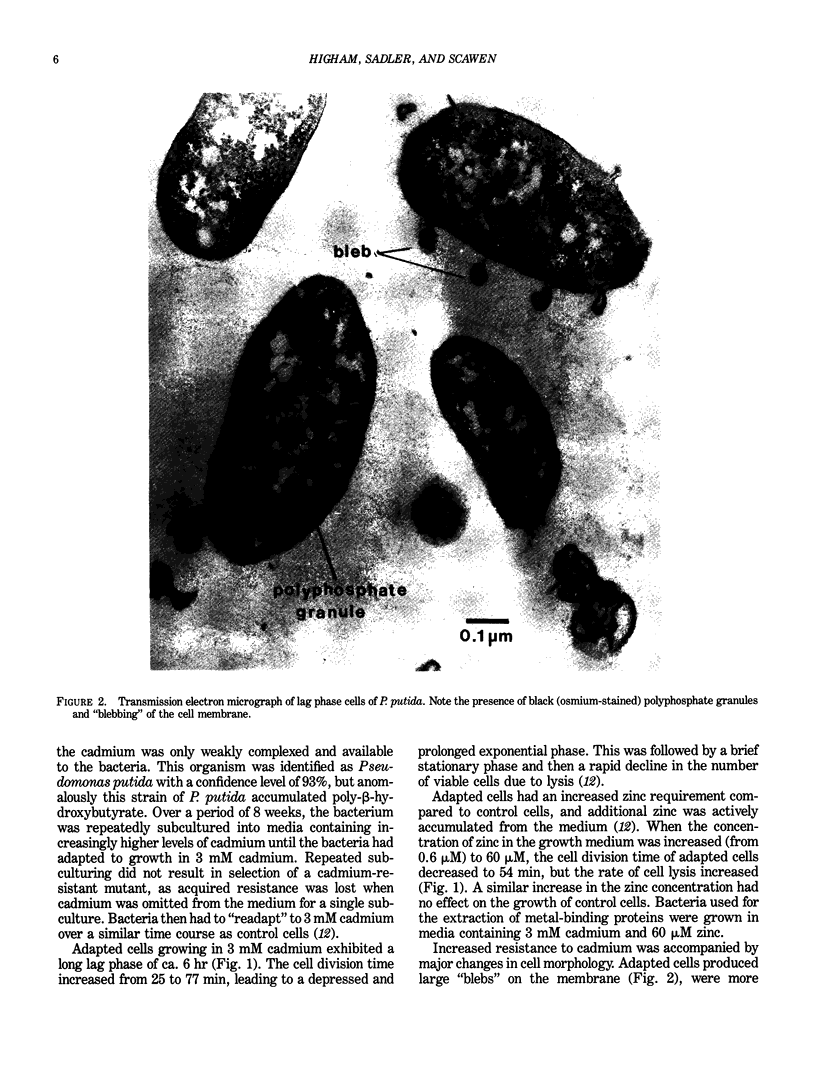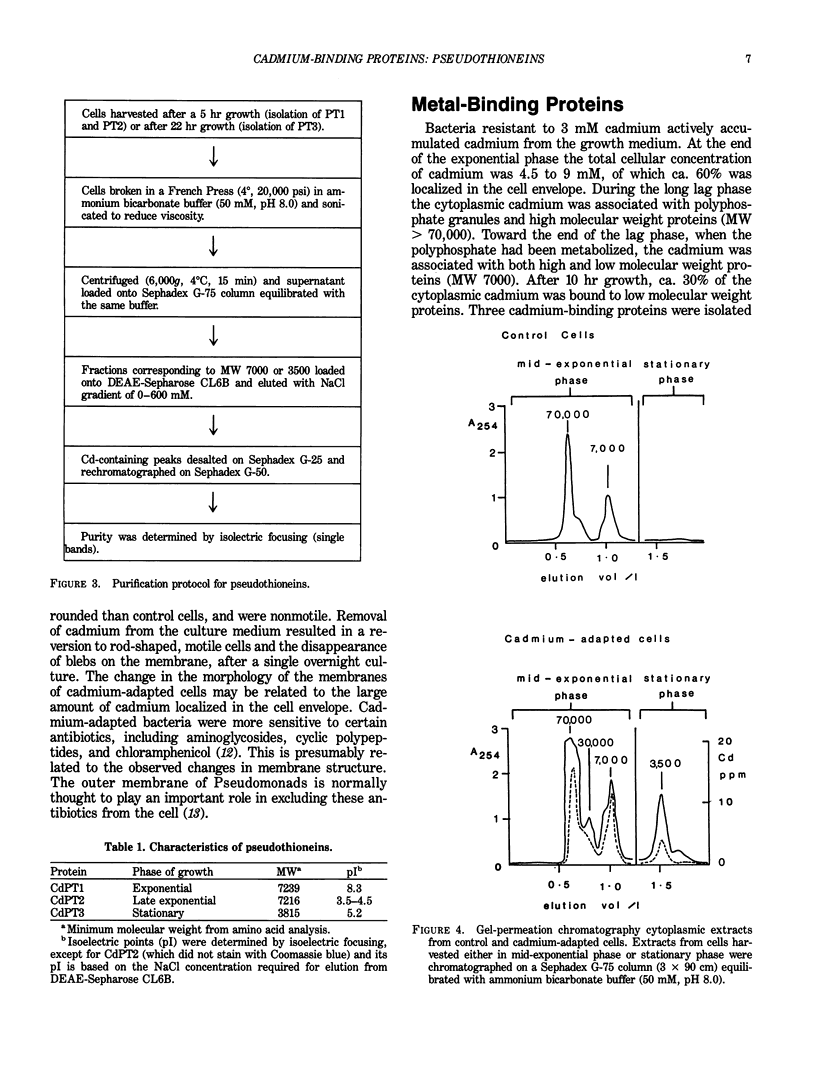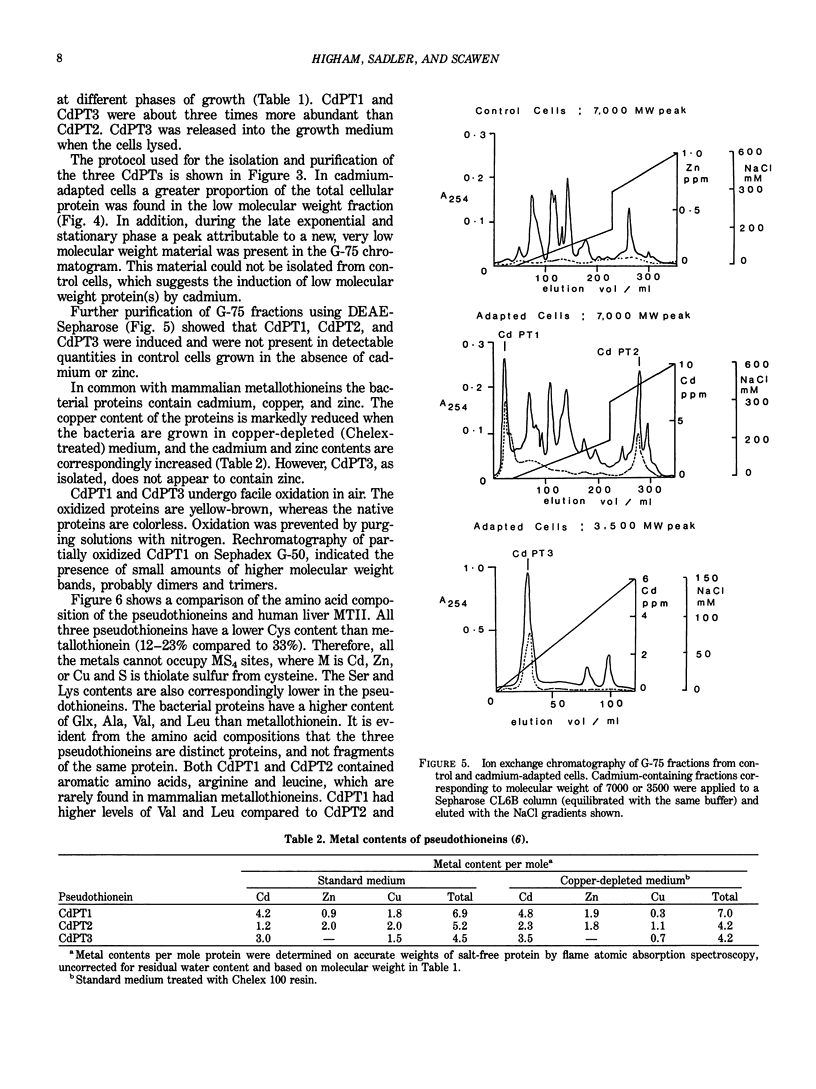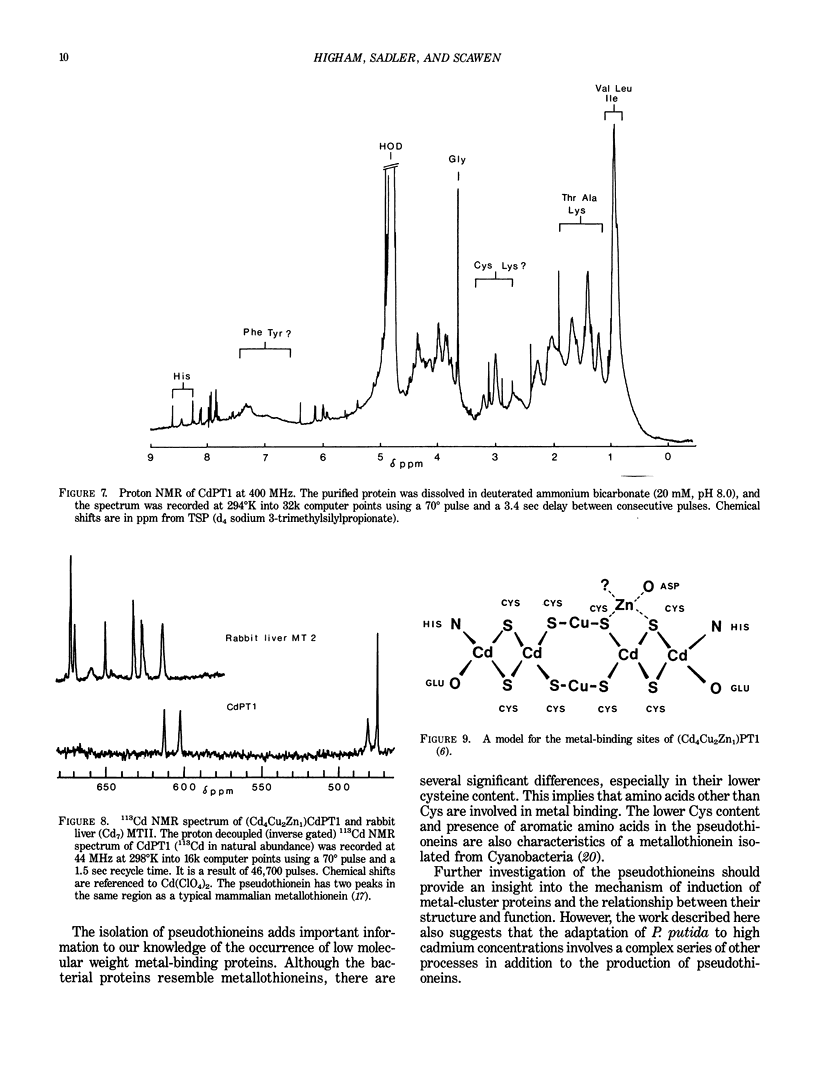Abstract
Pseudomonas putida adapted to growth in 3 mM cadmium. The resistance mechanism involved complexation of cadmium in polyphosphate granules, changes in the structure of the cell membrane and induction of three cysteine-rich, low molecular weight proteins (3500-7000) containing 4 to 7 g-atoms per mole of cadmium, zinc, and copper. Each protein was produced during a different phase of growth, and the smallest protein (3500) was released into the environment when the cells lysed at the end of the exponential phase. The metal binding sites of the major protein were further characterized using a range of physical methods, including 113Cd NMR. The properties of the bacterial pseudothioneins are compared to those of metallothioneins.
Full text
PDF






Images in this article
Selected References
These references are in PubMed. This may not be the complete list of references from this article.
- Higham D. P., Sadler P. J., Scawen M. D. Cadmium-Resistant Pseudomonas putida Synthesizes Novel Cadmium Proteins. Science. 1984 Sep 7;225(4666):1043–1046. doi: 10.1126/science.225.4666.1043. [DOI] [PubMed] [Google Scholar]
- Lerch K. Copper metallothionein, a copper-binding protein from Neurospora crassa. Nature. 1980 Mar 27;284(5754):368–370. doi: 10.1038/284368a0. [DOI] [PubMed] [Google Scholar]
- Olafson R. W., Loya S., Sim R. G. Physiological parameters of prokaryotic metallothionein induction. Biochem Biophys Res Commun. 1980 Aug 29;95(4):1495–1503. doi: 10.1016/s0006-291x(80)80066-0. [DOI] [PubMed] [Google Scholar]
- Otvos J. D., Olafson R. W., Armitage I. M. Structure of an invertebrate metallothionein from Scylla serrata. J Biol Chem. 1982 Mar 10;257(5):2427–2431. [PubMed] [Google Scholar]
- Prinz R., Weser U. A naturally occurring Cu-thionein in Saccharomyces cerevisiae. Hoppe Seylers Z Physiol Chem. 1975 Jun;356(6):767–776. doi: 10.1515/bchm2.1975.356.s1.767. [DOI] [PubMed] [Google Scholar]
- Tynecka Z., Gos Z., Zajac J. Energy-dependent efflux of cadmium coded by a plasmid resistance determinant in Staphylococcus aureus. J Bacteriol. 1981 Aug;147(2):313–319. doi: 10.1128/jb.147.2.313-319.1981. [DOI] [PMC free article] [PubMed] [Google Scholar]
- Tynecka Z., Gos Z., Zajac J. Reduced cadmium transport determined by a resistance plasmid in Staphylococcus aureus. J Bacteriol. 1981 Aug;147(2):305–312. doi: 10.1128/jb.147.2.305-312.1981. [DOI] [PMC free article] [PubMed] [Google Scholar]
- Vasák M., Hawkes G. E., Nicholson J. K., Sadler P. J. 113Cd NMR studies of reconstituted seven-cadmium metallothionein: evidence for structural flexibility. Biochemistry. 1985 Jan 29;24(3):740–747. doi: 10.1021/bi00324a031. [DOI] [PubMed] [Google Scholar]



